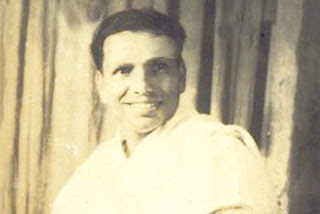Nambisan's weighty yet part-nasal music, which marked a quantum transition of Kathakali songs from its original Sopanam base to more of the Carnatic style, had such cascading effect on Kathakali music that it has since sounded radically different by becoming more ornate, sophisticated and bhava-oriented than ever. His prominent disciples at the Kerala Kalamandalam include virtually the who is who of the Kathakali music of the Kalluvazhi style: Kalamandalam Unnikrishna Kurup, Kalamandalam Gangadharan, Ramankutty Varrier, Madambi Subramanian Namboodiri, Tirur Nambissan Kalamandalam Sankaran Embranthiri, Kalamandalam Hyderali, Kalamandalam Haridas, Kalamandalam Subramanian, Kalamandalam P.G. Radhakrishnan, Kalanilayam Unnikrishnan and Kalamandalam Bhavadasan, Kalamandalam Gopalakrishnan.
Nambisan was born in Kothachira village of Palakkad district on November 2, 1919. After completing primary schooling, he received training in singing Ashtapadis in the Sopanam style. He had also learnt Ottamthullal from his elder brother Parameswaran Nambisan and maddalamfrom Vellattanhur Raman Nambisan. Later, on joining Kerala Kalamandalam as a teenager, Nambisan was initiated into Kathakali singing by veterans Samikutty Bhagavatar and Kuttan Bhagavatar. He also learnt the basics of Carnatic music from Kakkat Karanavappadu. Soon his qualities like dense voice, adherence to the pitch, emotive rendition and sense of rhythm found grooming under the tutelage of Venkitakrishna Bhagavatar. He soon mastered anchoring the music part of storyplays—be them the choreographically intricate type or ones meriting melodramatic rendition. Nambisan also parallelly received bits of training in Sanskrit, Hindi and English. He also took classes fromnadaswaram player Govinda Swamy.
As a teacher, he joined Kerala Kalamandalam in 1946 and retired from his alma mater as its principal.[3] He later served as a tutor in PSV Natyasangham, Kottakkal, as well.

No comments:
Post a Comment